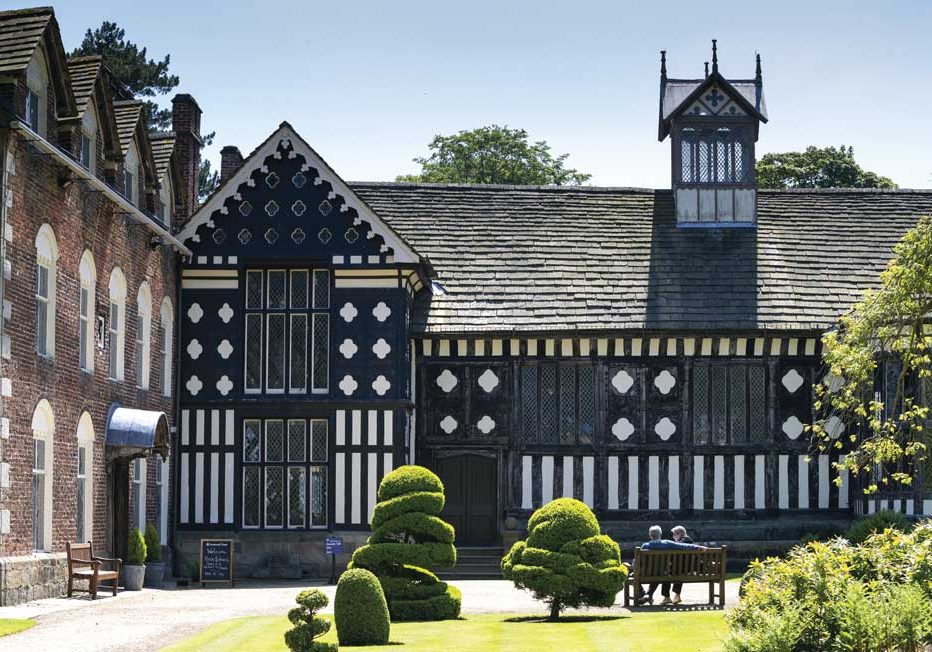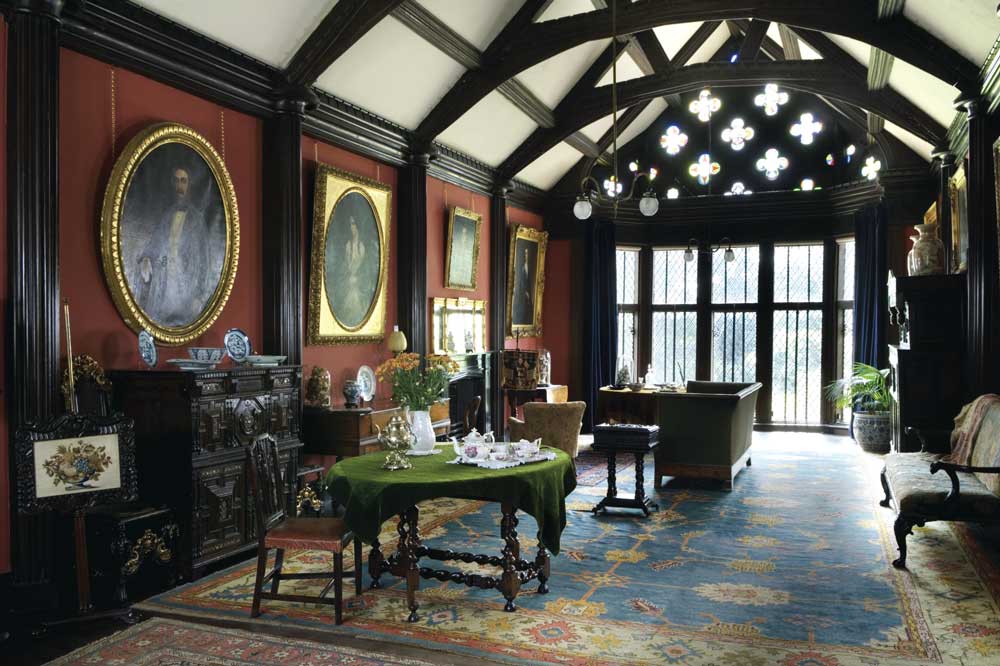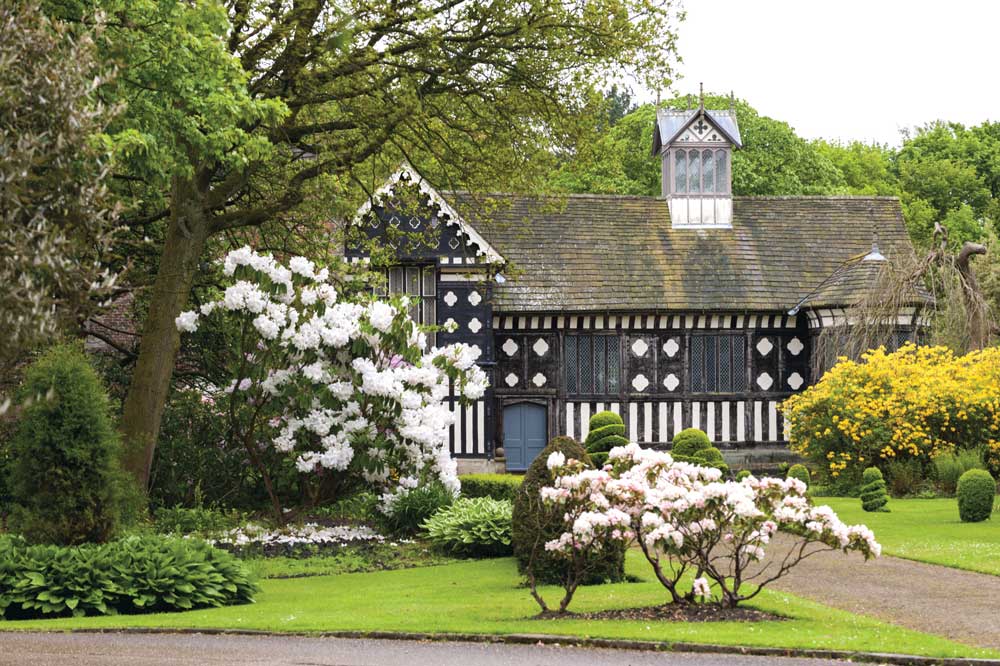
Historically Inspired
by [wpbb post:custom_field key='sfly_guest_author_names']
I am so excited to be writing for Northern Life magazine and sharing my love of historical buildings while gathering ideas to create a sweet treat inspired by the building. My mum and I have moved back to Lancashire from Cambridgeshire after quite a few years and couldn’t be happier. We have a little Dachshund called Lily who loves to come out with us but on this occasion, she was tucked up on the sofa at home.
Our first trip out since returning home to Lancashire was Rufford Old Hall.
The story behind Rufford Old Hall begins around 1530 when an eyecatching timber-framed manor house was built at Rufford in south-west Lancashire. Our visit to Rufford Old Hall was really enjoyable as it has such a fascinating history and beautiful architecture. The first view of the house that greeted us was the stunning black and white Tudor Great Hall. There is a bay window to the right and entrance door to the left and next to this is an imposing two storey gable of the east wing. In the 1720s the east wing was brought from Holmeswood Hall near Rufford and was re- erected. John Foster, a Liverpool architect, refaced the building in the 1820s and at the same time added the striking lantern to the roof of the Great Hall.

Up until 1936 when the National Trust took ownership, Rufford Old Hall was in the possession of the Hesketh family. Thomas Hesketh, divorced his first wife after she became pregnant by someone else. He did marry again but tragically his sons died young. In turn the estate was left to Robert, who was the son of his mistress. Robert succeeded in keeping the estate and fought off opposition from the non-illegitimate claimants and it is thanks to him that we see the magnificent building today. Rufford Old Hall was briefly occupied by Robert eldest son Thomas Fermor-Hesketh and it was he who presented the house to the National Trust.
Sir Robert’s Great Hall is an outstanding example of Tudor Gothic style with a decorative hammerbeam roof, which we could appreciate by using the mirror provided and not craning our necks! In the Great Hall is a freestanding carved wooden screen made of bog oak, which likely dates from between 1530 and 1540. It is termed movable as it is not linked to the sphere posts, which are the fixed structure between the Great Hall and the screens passage in an English medieval timber house. It is described by the architectural guide Pevsner as being “of an exuberance of decoration matched nowhere else in England.” It is the only known surviving example from the 16th Century. Adorning the Great Hall are arms and armour, a tradition that was revived in the 19th Century by antiquarian owners such as the Heskeths’. So, although they look as though they reside comfortably in a Tudor banqueting hall: there was no mention of the arms and armour in an inventory from 1620.

A few years ago, I had this urge to buy some antique furniture and I went a little mad on Old Charm. After purchasing a sideboard, dresser, large dining table and six chairs our dining room would have been fit for a Tudor banquet! When we entered the dining room at Rufford Old Hall I had a total flash back. Needless to say, the urge passed and the Old Charm was swiftly sold on an auction site for less than I paid for it! Moving on… hanging on the wall in the dining room, with a prime view of the dining table, is a Flemish landscape painting c.1630 by Gommaert van der Gracht. It exhibits an array of exotic fruit and vegetables, a goat and the ‘Noli me tangere’ which translates to a warning against meddling or interference, another term for touch me not.
In the Drawing Room the 16th Century roof timbers are such an eyecatching feature, as too is the stained glass in the north gable. The collection of stained glass is believed to have been introduced by Sir Thomas Dalrymple Hesketh in the early 19th Century. The sunlight was highlighting the beautiful hues of the ovals and squares, which are 17th Century German or Swiss coats of arms, biblical scenes, of saints and martyrs. With Sir Thomas having travelled around Europe, it is likely it was at that time he collected them with his second wife who was of Swiss origin.
A name that has popped up when learning about Rufford Old Hall is William Shakespeare. In around 1580 Shakespeare had been sent, by his Stratford schoolmaster, to be an assistant teacher in the household of Alexander Hoghton at Lea Hall near Preston, and the “wilim Shakeshaft nowe dwellynge with me”, referred to by Hoghton in his will, is almost certainly Shakespeare. Sir Thomas is believed to have kept a company of players and there is credible evidence that Shakespeare could have performed in the Great Hall. In his will, Hoghton who died in 1581, had bequeathed to Sir Thomas Hesketh his musical instruments and “playe clothes.”
There is a real sense of a vibrant family home with great love and it is no wonder that Rufford Old Hall is a popular wedding venue. A Lancashire gem that if you haven’t already visited, is a definite. I have only touched on a fraction of this magical house to explore and I hope it has whetted your curiosity to visit and learn more.
When I visit somewhere for the first time, I like to come away with some inspiration to do some CBT, my version being, Constructive Baking. Therapy, something that helps me with my anxiety. So, having seen the beehives in the grounds near the entrance and the link with Shakespeare, my inspired recipe for this visit is, drumroll…
To Bee Or Not To Bee Honey Cupcakes
[cooked-recipe id="35866"]
(recipe not found or in draft status)
(recipe not found or in draft status)



